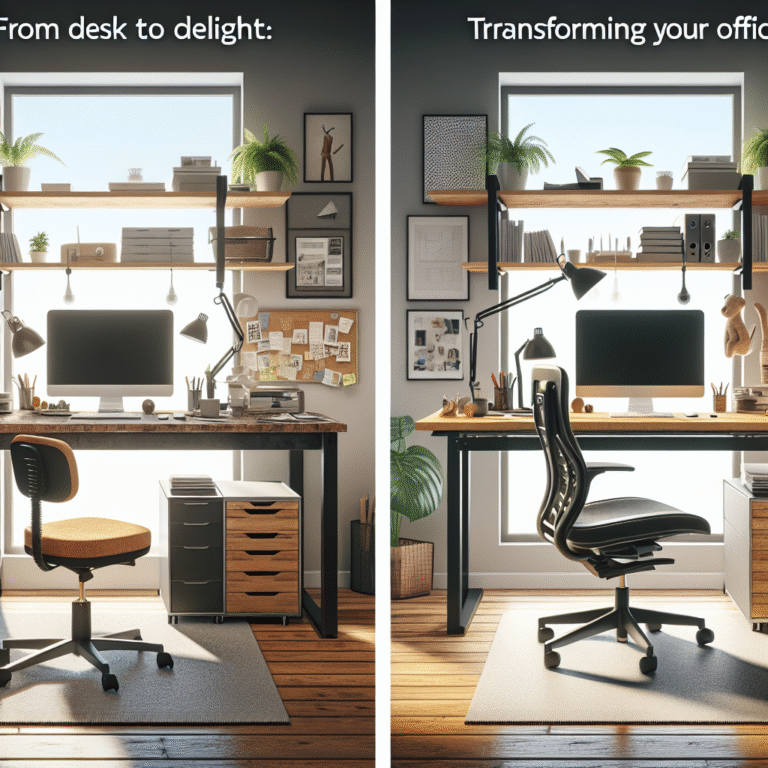
The Ultimate Guide: Feel Free to Mix and Match Elements or Modify Them to Better Suit Your Target Audience!
Introduction
In today’s rapidly evolving digital landscape, the true power of content creation lies not just in producing information but in creating an experience tailored to resonate with your specific audience. Whether you’re a seasoned marketer, a budding entrepreneur, or an educator, the principle remains the same: feel free to mix and match elements or modify them to better suit your target audience! This approach allows you to engage your readers more effectively, cater to their diverse needs, and ultimately drive meaningful results.
As we delve into this guide, we’ll explore the significance of personalization in content, examine potent case studies, and give you actionable insights to adopt this strategy successfully.
Understanding the Importance of Audience Tailoring
Why Personalization Matters
Personalization is no longer a luxury; it’s a necessity. In an age where consumers are bombarded with information, tailoring your content can determine whether you capture attention or fade into obscurity. According to a study by Epsilon, 80% of consumers are more likely to make a purchase when brands offer personalized experiences. This proves that feel free to mix and match elements or modify them to better suit your target audience! not only improves engagement but also significantly enhances conversion rates.
The Psychology Behind Personalized Content
Understanding your audience’s psychology can lead to more effective content strategies. People are more likely to engage with content that feels relevant to them. According to behavioral science, familiarity breeds preference. By personalizing your content, you leverage this principle, making it easier for your audience to connect with your message.
Tailoring Techniques to Optimize Engagement
Here are some powerful techniques to ensure your audience feels acknowledged and catered to:
-
Segmentation: Dividing your audience into distinct groups based on demographics, behavior, or preferences. This allows for more precise targeting.
-
Dynamic Content: Use technology to adapt content in real time based on user behavior. For example, depending on where users are in the buying process, you can modify emails or website content.
- Feedback Mechanisms: Encourage your audience to provide feedback, allowing you to modify future offerings and better serve their needs.
Case Studies: How Personalization Works in Real-World Scenarios
Case Study 1: Netflix’s Recommendation Engine
Netflix has mastered the art of personalization, utilizing a sophisticated algorithm to recommend shows and movies to users based on their viewing history. By mixing and matching elements from various genres and user ratings, Netflix keeps viewers engaged and encourages a longer watch time.
Relevance
Netflix’s method demonstrates the power of using data to modify user experiences effectively. By analyzing viewing habits, they can make educated guesses about what a user might enjoy, leading to increased viewer satisfaction and retention.
Case Study 2: Amazon’s Customized Shopping Experience
Amazon employs advanced algorithms to deliver tailored product recommendations. Every user’s homepage is customized based on past purchases, searches, and clicks, allowing Amazon to create a highly personalized shopping journey. When you feel free to mix and match elements like user interests, shopping behaviors, and market trends, you foster a unique experience that speaks directly to each consumer.
Relevance
This strategy is an example of effectively modifying elements to better suit the individual shopper’s needs. Ultimately, it leads to higher sales conversions and strengthens brand loyalty.
Strategies for Implementation
1. Develop Audience Personas
Begin by identifying who your target audience is. Building comprehensive personas based on demographics, interests, and online behavior provides insights into how to mix and match elements in your content strategy. You may create segments like "Millennial Shoppers" or "Health-Conscious Consumers," each with unique content needs.
2. Utilize Data Analytics
Data is your best friend. Analyzing how users interact with your website, social media, and emails helps you understand their preferences. Data analytics tools can illuminate which content types get the most engagement, allowing you to modify them for even better outcomes.
3. Create Modular Content
Consider breaking down your content into modular components that can be easily mixed and matched. For example, create a library of videos, blog posts, infographics, and social media snippets that can be reassembled based on specific audience segments.
4. Experiment and Iterate
Don’t shy away from experimenting with different formats, messages, and channels. Use A/B testing to see which combinations of content resonate most with your audience. Always remember to feel free to mix and match elements until you find the right recipe for engagement.
5. Implement Feedback Loops
Establish a system for collecting ongoing feedback from your audience. This can take the form of surveys, comment sections, and direct outreach. The insights gained will allow you to continually modify your approach to align with audience preferences.
Tools to Help You Personalize Content
Table 1: Personalization Tools Comparison
| Tool | Features | Best For |
|---|---|---|
| HubSpot | CRM, email marketing, analytics | Inbound marketing |
| Segment | Customer data platform, real-time data | Data-driven decisions |
| Canva | Graphic design, templates for social media | Visual content creation |
| Mailchimp | Email marketing automation and analysis | Targeted email campaigns |
| Google Analytics | User behavior tracking | Website content optimization |
The Impact of Content Personalization
Increased Engagement
When you start to mix and match elements in ways that resonate with your audience, you will observe increased interaction rates. Personalized content often sees higher click-through rates and engagement levels.
Enhanced Customer Loyalty
Successful personalization fosters a sense of connection between the brand and the consumer. This leads to increased customer loyalty, as consumers are more inclined to engage with brands that truly understand their needs and preferences.
Greater Conversion Rates
Personalized experiences can lead to action. A study showed that companies using personalization see an average 20% increase in sales. By implementing tailored strategies, you significantly boost your chances of converting leads into loyal customers.
Conclusion
In a world that often feels impersonal, offering tailored content that resonates with your audience makes all the difference. Remember: feel free to mix and match elements or modify them to better suit your target audience! The combination of strategic thinking, insightful data, and creative experimentation empowers you to create engaging experiences that lead to greater satisfaction and loyalty.
Actionable Takeaway
Start today. Identify one area where you can personalize your content—be it your newsletter, social media posts, or website. Gather insights, make modifications, and watch your engagement skyrocket.
FAQs
-
What does it mean to personalize content?
Personalizing content means tailoring it to meet the unique needs and preferences of your audience. This creates a more relevant and engaging experience. -
How can I gather data on my audience?
You can gather data through surveys, website analytics, social media engagement, and customer feedback to understand their interests and behaviors better. -
What are some tools I can use for personalization?
Tools like HubSpot, Google Analytics, and Mailchimp can help you create and monitor personalized content campaigns effectively. -
Is personalized content expensive to produce?
While it requires an initial investment in tools and strategy, personalized content often results in higher conversion rates that justify the cost. - How often should I tweak my content strategy?
Regularly review your content strategy. Consider seasonal changes, audience feedback, and performance analytics to make informed adjustments.
By embracing the power of personalization and often reminding yourself to feel free to mix and match elements or modify them to better suit your target audience!, you’re not just creating content; you’re crafting a captivating experience that resonates long after the first interaction.














